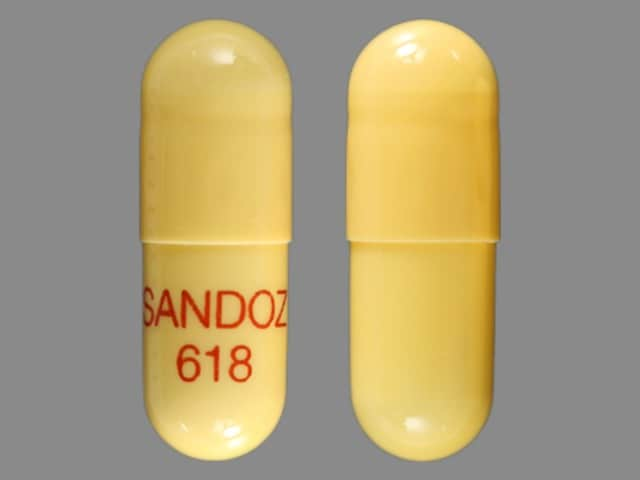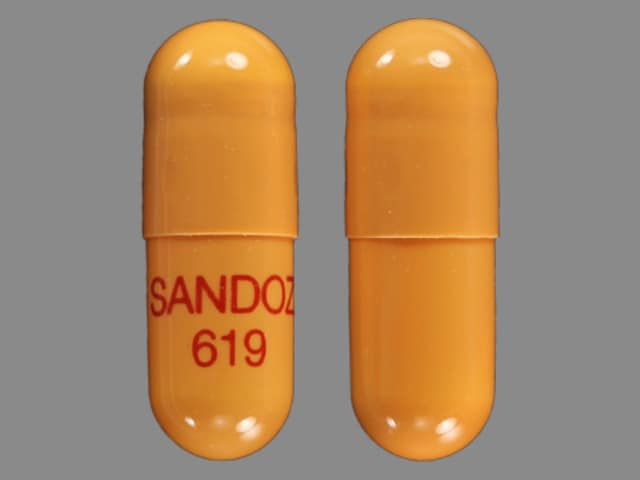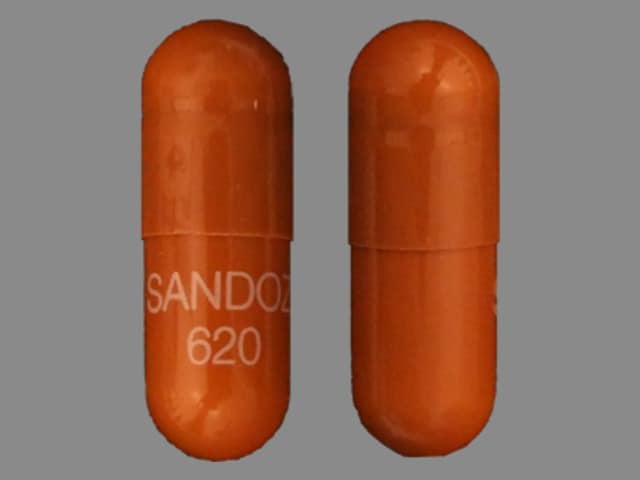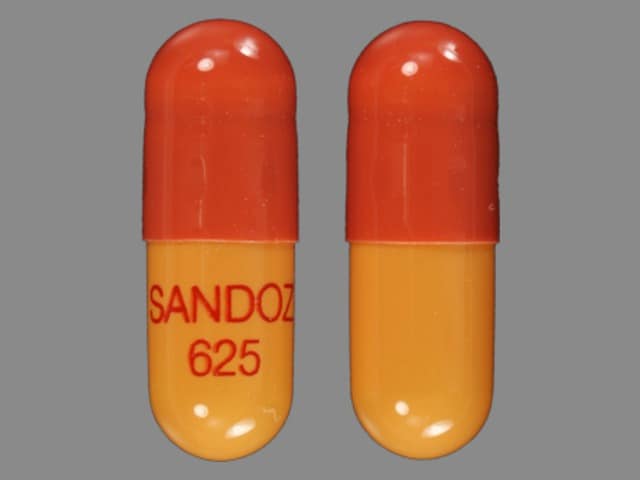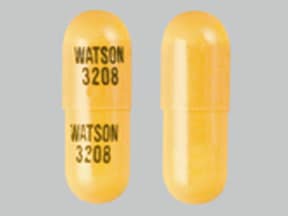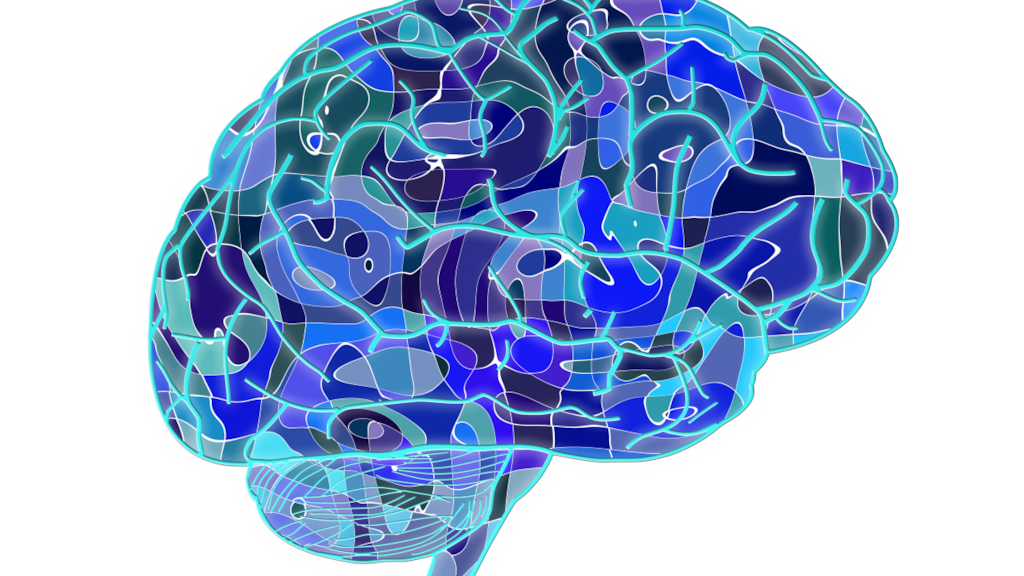Dosage Forms
Excipient information presented when available (limited, particularly for generics); consult specific product labeling. [DSC] = Discontinued product
Capsule, Oral:
Exelon: 1.5 mg [DSC], 3 mg [DSC], 4.5 mg [DSC], 6 mg [DSC]
Generic: 1.5 mg, 3 mg, 4.5 mg, 6 mg
Patch 24 Hour, Transdermal:
Exelon: 4.6 mg/24 hr (1 ea, 30 ea); 9.5 mg/24 hr (1 ea, 30 ea); 13.3 mg/24 hr (1 ea, 30 ea)
Generic: 4.6 mg/24 hr (1 ea, 30 ea); 9.5 mg/24 hr (1 ea, 30 ea); 13.3 mg/24 hr (1 ea, 30 ea)
Pharmacology
Mechanism of Action
A deficiency of cortical acetylcholine is thought to account for some of the symptoms of Alzheimer disease and the dementia of Parkinson disease; rivastigmine increases acetylcholine in the central nervous system through reversible inhibition of its hydrolysis by cholinesterase
Pharmacokinetics/Pharmacodynamics
Absorption
Oral: Fasting: Rapid and complete within 1 hour; Transdermal patch: Within 30 to 60 minutes
Distribution
Vd: 1.8 to 2.7 L/kg; penetrates blood-brain barrier (CSF levels are ~40% of plasma levels following oral administration)
Metabolism
Extensively via cholinesterase-mediated hydrolysis in the brain; metabolite undergoes N-demethylation and/or sulfate conjugation hepatically; minimal CYP involvement; linear kinetics at 3 mg twice daily, but nonlinear at higher doses
Excretion
Urine (97% as metabolites); feces (0.4%)
Time to Peak
Oral: 1 hour; Transdermal patch: 8 to 16 hours following first dose
Duration of Action
Anticholinesterase activity (CSF): ~10 hours (6 mg oral dose)
Half-Life Elimination
Oral: 1.5 hours; Transdermal patch: ~3 hours (after removal)
Protein Binding
40%
Use in Specific Populations
Special Populations: Renal Function Impairment
Moderate renal function impairment
Mean oral clearance is 64% lower.
Severe renal function impairment
Mean oral clearance is 43% higher for unexplained reasons.
Special Populations: Hepatic Function Impairment
Mean oral clearance is 60% lower.
Special Populations: Elderly
Mean oral clearance was 30% lower.
Special Populations Note
Cigarette smoking: Oral clearance increases 23%.
Body weight: Exposure is higher in patients with low body weight (<50 kg) and lower in patients with an increased body weight (>100 kg).
Use: Labeled Indications
Alzheimer dementia:
Oral: Treatment of mild to moderate dementia of the Alzheimer type.
Transdermal: Treatment of mild, moderate, and severe dementia of the Alzheimer type.
Parkinson disease dementia: Treatment of mild to moderate dementia associated with Parkinson disease.
Use: Off Label
Dementia with Lewy bodiesa
Therapeutic options for the management of behavioral symptoms associated with Lewy body dementia are limited. Cholinesterase inhibitors are recommended for treatment of neuropsychiatric symptoms associated with Lewy body dementia by the Dementia with Lewy Bodies Consortium (McKeith 2005); however, rivastigmine is the only cholinesterase inhibitor with placebo-controlled data supporting its use. Although limited to fewer than 200 patients, initial data indicate rivastigmine provides statistically significant early improvement in clinical and cognitive assessments in patients with dementia with Lewy bodies and no deterioration with long-term therapy McKeith 2000. In patients who do not respond to cholinesterase inhibitors, a cautious trial of an atypical antipsychotic agent may be warranted after warning the patient and caregiver about the potential for severe sensitivity reactions Grace 2001.
Vascular dementiacyes
Data from a meta-analysis suggest that rivastigmine may be beneficial for the treatment of cognitive symptoms of vascular dementia; however, positive effects are based on one large study Birks 2013.
Based on the British Association for Psychopharmacology (BAP) consensus statement on clinical practice with anti-dementia drugs, cholinesterase inhibitors, including rivastigmine, are not recommended for patients with vascular dementia; however, those with mixed vascular dementia and Alzheimer disease may benefit BAP [O'Brien 2017].
Contraindications
Hypersensitivity to rivastigmine, other carbamate derivatives, or any component of the formulation; history of application-site reactions with rivastigmine patch
Canadian labeling: Additional contraindications (not in US labeling): Severe hepatic impairment; history of severe skin reactions (eg, allergic dermatitis [disseminated], Stevens-Johnson syndrome) with oral or transdermal rivastigmine
Dosage and Administration
Dosing: Adult
Note: Exelon oral solution and capsules are bioequivalent.
Alzheimer dementia, mild to moderate:
Oral: Initial: 1.5 mg twice daily; may increase by 3 mg daily (1.5 mg/dose) every 2 weeks based on tolerability (maximum recommended dose: 6 mg twice daily).
Low body weight: Careful titration and monitoring should be performed in patients with low body weight. In patients <50 kg, monitor closely for toxicities (eg, excessive nausea, vomiting), and consider reducing the dose if such toxicities develop.
Note: If GI adverse events occur, discontinue treatment for several doses then restart at the same or next lower dosage level; antiemetics have been used to control GI symptoms. If dosing is interrupted for ≤3 days, restart the treatment at the same or lower dose and titrate as previously described.
Transdermal patch: Initial: Apply 4.6 mg/24 hours patch once daily; if well tolerated, may titrate (no sooner than every 4 weeks) to 9.5 mg/24 hours (continue as long as therapeutically beneficial), and then to 13.3 mg/24 hours (maximum dose); doses >13.3 mg/24 hours have not been shown to be more effective and are associated with significant increases in adverse events. Recommended effective dose: Apply 9.5 mg/24 hours or 13.3 mg/24 hours patch once daily; remove old patch and replace with a new patch every 24 hours.
Low body weight: Careful titration and monitoring should be performed in patients with low body weight. In patients <50 kg, monitor closely for toxicities (eg, excessive nausea, vomiting) and consider reducing the maintenance dose to 4.6 mg/24 hour if such toxicities develop.
Note: If dosing is interrupted for ≤3 days, restart treatment with the same or a lower strength patch. If interrupted for >3 days, reinitiate at 4.6 mg/24 hours and titrate (no sooner than every 4 weeks) to lowest effective maintenance dose.
Conversion from oral therapy: If oral daily dose <6 mg, switch to 4.6 mg/24 hours patch; if oral daily dose 6 to 12 mg, switch to 9.5 mg/24 hours patch. Apply patch on the day following last oral dose.
Alzheimer dementia, severe: Transdermal patch: Initial: Apply 4.6 mg/24 hours patch once daily. Titrate dose as recommended for transdermal dosing for mild-to-moderate Alzheimer dementia. Recommended effective dose: Apply 13.3 mg/24 hours patch once daily; remove old patch and replace with a new patch every 24 hours.
Low body weight: Careful titration and monitoring should be performed in patients with low body weight. In patients <50 kg, monitor closely for toxicities (eg, excessive nausea, vomiting) and consider reducing the maintenance dose to 4.6 mg/24 hours if such toxicities develop.
Note: If dosing is interrupted for ≤3 days, restart treatment with the same or a lower strength patch. If interrupted for >3 days, reinitiate at 4.6 mg/24 hour and titrate (no sooner than every 4 weeks) to lowest effective maintenance dose.
Parkinson-related dementia, mild to moderate:
Oral: Initial: 1.5 mg twice daily; may increase by 3 mg daily (1.5 mg per dose) every 4 weeks based on tolerability (maximum recommended dose: 6 mg twice daily).
Low body weight: Careful titration and monitoring should be performed in patients with low body weight. In patients <50 kg, monitor closely for toxicities (eg, excessive nausea, vomiting) and consider reducing the dose if such toxicities develop.
Note: If GI adverse events occur, discontinue treatment for several doses then restart at the same or next lower dosage level; antiemetics have been used to control GI symptoms. If dosing is interrupted for ≤3 days, restart the treatment at the same or lower dose and titrate as previously described.
Transdermal patch: Initial: Apply 4.6 mg/24 hours patch once daily. If well tolerated, may titrate (no sooner than every 4 weeks) to 9.5 mg/24 hours (continue as long as therapeutically beneficial), and then to 13.3 mg/24 hours (maximum dose); doses >13.3 mg/24 hours have not been shown to be more effective and are associated with significant increases in adverse events. Recommended effective dose: Apply 9.5 mg/24 hours or 13.3 mg/24 hours patch once daily; remove old patch and replace with a new patch every 24 hours.
Low body weight: Careful titration and monitoring should be performed in patients with low body weight. In patients <50 kg, monitor closely for toxicities (eg, excessive nausea, vomiting) and consider reducing the maintenance dose to 4.6 mg/24 hour if such toxicities develop.
Note: If dosing is interrupted for ≤3 days, restart treatment with the same or a lower strength patch. If interrupted for >3 days, reinitiate at 4.6 mg/24 hours and titrate (no sooner than every 4 weeks) to lowest effective maintenance dose.
Lewy body dementia (off-label use): Oral: Initial: 1.5 mg twice daily; may increase by 3 mg daily (1.5 mg per dose) every 2 weeks based on tolerability up to a maximum of 6 mg twice daily (titration lasted up to 8 weeks); study duration was 23 weeks (McKeith 2000). An extension study was conducted in a limited number of patients (at the same dose) for up to 96 weeks (Grace 2001).
Vascular dementia (off-label use): Oral: Initial: 1.5 mg twice daily for 4 weeks; may increase dose based on response and tolerability in increments of 3 mg/day (1.5 mg/dose) every 4 weeks up to a maximum 6 mg twice daily (Ballard 2008).
Dosing: Geriatric
Refer to adult dosing. Following oral administration, clearance is reduced in patients >60 years of age; in clinical trials, safety and efficacy were similar between elderly and younger patients. Age was not associated with increased exposure in patients treated transdermally. Titrate dose to individual's tolerance.
Administration
Oral: Administer with meals (breakfast and dinner). Capsule should be swallowed whole. Oral solution [Canadian product], which is available for patients who cannot swallow capsules, can be swallowed directly from syringe or mixed with water, soda, or cold fruit juice. Stir well and drink immediately.
Topical: Apply transdermal patch to upper or lower back (alternatively, may apply to upper arm or chest). Do not use patch if the pouch seal is broken or if the patch is cut, altered, or damaged. Avoid reapplication to same spot of skin for 14 days (eg, may rotate sections of back). Apply to clean, dry, and hairless skin. Patch should be pressed down firmly by applying pressure with the hand over the entire patch for at least 30 seconds, making sure edges stick well. Do not apply to red, irritated, or broken skin. Avoid areas of recent application of lotion or powder. After removal, fold patch to press adhesive surfaces together, place in previously saved pouch, and discard. Avoid eye contact; wash hands after handling patch. Remove old patch and replace with a new patch every 24 hours (at the same time each day). If a dose is missed or if the patch falls off, apply a new patch immediately and replace the following day at the usual application time. Avoid exposing the patch to external sources of heat (eg, sauna, excessive light) for prolonged periods of time. No more than 1 patch should be applied daily and existing patch must be removed prior to applying new patch. Discard any used or unused patches by folding adhesive sides together and dispose of in trash away from children and pets.
Storage
Oral: Store at 25°C (77°F); excursions are permitted between 15°C and 30°C (59°F and 86°F); do not freeze oral solution. Store solution in an upright position.
Transdermal patch: Store at 25°C (77°F); excursions are permitted between 15°C and 30°C (59°F and 86°F). Patches should be kept in sealed pouch until use.
Rivastigmine Images
Drug Interactions
Amifampridine: Acetylcholinesterase Inhibitors may enhance the therapeutic effect of Amifampridine. Amifampridine side effects may also be increased. Amifampridine may enhance the therapeutic effect of Acetylcholinesterase Inhibitors. Acetylcholinesterase inhibitor side effects may also be increased. Monitor therapy
Anticholinergic Agents: Acetylcholinesterase Inhibitors may diminish the therapeutic effect of Anticholinergic Agents. Anticholinergic Agents may diminish the therapeutic effect of Acetylcholinesterase Inhibitors. Monitor therapy
Antipsychotic Agents: Acetylcholinesterase Inhibitors (Central) may enhance the neurotoxic (central) effect of Antipsychotic Agents. Severe extrapyramidal symptoms have occurred in some patients. Monitor therapy
Benoxinate: Acetylcholinesterase Inhibitors may enhance the therapeutic effect of Benoxinate. Specifically, the effects of benoxinate may be prolonged. Monitor therapy
Beta-Blockers: Rivastigmine may enhance the bradycardic effect of Beta-Blockers. Avoid combination
Bradycardia-Causing Agents: May enhance the bradycardic effect of other Bradycardia-Causing Agents. Monitor therapy
Bromopride: Rivastigmine may enhance the adverse/toxic effect of Bromopride. Specifically, the risk of extrapyramidal adverse reactions may be increased with this combination. Avoid combination
Ceritinib: Bradycardia-Causing Agents may enhance the bradycardic effect of Ceritinib. Management: If this combination cannot be avoided, monitor patients for evidence of symptomatic bradycardia, and closely monitor blood pressure and heart rate during therapy. Exceptions are discussed in separate monographs. Consider therapy modification
Cholinergic Agonists: Acetylcholinesterase Inhibitors may enhance the adverse/toxic effect of Cholinergic Agonists. Monitor therapy
Corticosteroids (Systemic): May enhance the adverse/toxic effect of Acetylcholinesterase Inhibitors. Increased muscular weakness may occur. Monitor therapy
Dipyridamole: May diminish the therapeutic effect of Acetylcholinesterase Inhibitors. Monitor therapy
Fexinidazole [INT]: Bradycardia-Causing Agents may enhance the arrhythmogenic effect of Fexinidazole [INT]. Avoid combination
Ivabradine: Bradycardia-Causing Agents may enhance the bradycardic effect of Ivabradine. Monitor therapy
Lacosamide: Bradycardia-Causing Agents may enhance the AV-blocking effect of Lacosamide. Monitor therapy
Metoclopramide: Rivastigmine may enhance the adverse/toxic effect of Metoclopramide. Specifically, the risk of extrapyramidal adverse reactions may be increased with this combination. Avoid combination
Midodrine: May enhance the bradycardic effect of Bradycardia-Causing Agents. Monitor therapy
Neuromuscular-Blocking Agents (Nondepolarizing): Acetylcholinesterase Inhibitors may diminish the neuromuscular-blocking effect of Neuromuscular-Blocking Agents (Nondepolarizing). Monitor therapy
Ruxolitinib: May enhance the bradycardic effect of Bradycardia-Causing Agents. Management: Ruxolitinib Canadian product labeling recommends avoiding use with bradycardia-causing agents to the extent possible. Monitor therapy
Siponimod: Bradycardia-Causing Agents may enhance the bradycardic effect of Siponimod. Management: Avoid coadministration of siponimod with drugs that may cause bradycardia. Consider therapy modification
Succinylcholine: Acetylcholinesterase Inhibitors may increase the serum concentration of Succinylcholine. Management: Consider alternatives to this combination due to a risk of prolonged neuromuscular blockade. Consider therapy modification
Terlipressin: May enhance the bradycardic effect of Bradycardia-Causing Agents. Monitor therapy
Tobacco (Smoked): May decrease the serum concentration of Rivastigmine. Monitor therapy
Tofacitinib: May enhance the bradycardic effect of Bradycardia-Causing Agents. Monitor therapy
Adverse Reactions
>10%:
Central nervous system: Dizziness (oral: 6% to 21%; transdermal: ≤6%), headache (oral: 4% to 17%; transdermal ≤4%), agitation (transdermal: 1% to 14%), falling (6% to 12%)
Endocrine & metabolic: Weight loss (3% to 26%)
Gastrointestinal: Nausea (oral: 17% to 47%; transdermal: 2% to 10%), vomiting (oral: 13% to 31%; transdermal: 3% to 9%), diarrhea (oral: 5% to 19%; transdermal: ≤7%), anorexia (oral: ≤17%; transdermal: ≤3%), abdominal pain (oral: 13%; transdermal: 2%)
Local: Application site erythema (transdermal: 1% to 13%)
Neuromuscular & skeletal: Tremor (oral: 4% to 23%; transdermal: 7%)
1% to 10%:
Cardiovascular: Hypertension (1% to 3%), syncope (oral: 3%)
Central nervous system: Fatigue (oral: 4% to 9%; transdermal: 2% to 4%), insomnia (1% to 9%), confusion (oral: 8%), depression (2% to 6%), drowsiness (4% to 6%), malaise (oral: 5%), anxiety (1% to 5%), hallucination (2% to 5%), abnormal gait (transdermal: 4%), psychomotor agitation (transdermal: 1% to 3%), aggressive behavior (1% to 3%), exacerbation of Parkinson disease (oral: 1% to 3%), cogwheel rigidity (oral: 1% to 3%), restlessness (oral: 1% to 3%), drug-induced Parkinson disease (oral: 2%)
Dermatologic: Diaphoresis (oral: 2% to 4%)
Endocrine & metabolic: Dehydration (1% to 2%)
Gastrointestinal: Dyspepsia (oral: 9%), decreased appetite (≤9%), upper abdominal pain (≤4%), sialorrhea (oral: 1% to 2%)
Genitourinary: Urinary tract infection (1% to 10%), urinary incontinence (≤3%)
Local: Application site pruritus (transdermal: ≤5%), application site irritation (transdermal: ≤3%), application site rash (transdermal: 2%)
Neuromuscular & skeletal: Weakness (2% to 6%;), bradykinesia (3% to 4%), hypokinesia (1% to 4%), dyskinesia (3%)
<1%, postmarketing, and/or case reports: Abnormal hepatic function tests, allergic dermatitis, atrial fibrillation, atrioventricular block, bradycardia, dermatitis (transdermal patch), dystonia, edema, extrapyramidal reaction, gastrointestinal hemorrhage, hepatic failure, hepatitis, hyperacidity, hypersensitivity reaction, nightmares, pancreatitis, seizure, severe vomiting (with esophageal rupture; following inappropriate reinitiation of dose), sick-sinus syndrome, skin blister, Stevens-Johnson syndrome, tachycardia, urticaria
Warnings/Precautions
Concerns related to adverse effects:
- Allergic dermatitis: Disseminated allergic dermatitis has been reported following both oral and transdermal administration. Discontinue use of all routes of rivastigmine therapy in patients who develop disseminated allergic dermatitis. Use of the transdermal patch may result in allergic contact dermatitis; discontinue therapy if an intense local reaction occurs (eg, increasing erythema, edema, papules, vesicles) and if symptoms do not improve after 48 hours of patch removal. If therapy is still required, oral rivastigmine may be used following negative allergy testing; some patients may not be able to take rivastigmine in any form.
- CNS depression: May cause CNS depression, which may impair physical or mental abilities; patients must be cautioned about performing tasks that require mental alertness (eg, operating machinery or driving).
- Extrapyramidal effects: May exacerbate or induce extrapyramidal symptoms; worsening of symptoms (eg, tremor) in patients with Parkinson disease has been observed.
- GI effects: Significant nausea/vomiting/diarrhea or anorexia/weight loss/decreased appetite are associated with use; occurs more frequently in women and during the titration phase. The incidence and severity of these reactions are dose-related; dehydration may result from prolonged vomiting or diarrhea. Monitor weight during therapy.
- Vagotonic effects: Rivastigmine may have vagotonic effects which may cause bradycardia and/or heart block with or without a history of cardiac disease. Use with caution in patients with sick-sinus syndrome, bradycardia, or other supraventricular conduction abnormalities. Alzheimer treatment guidelines consider bradycardia to be a relative contraindication for use of centrally-active cholinesterase inhibitors.
Disease-related concerns:
- Peptic ulcer disease: Use with caution in patients at risk of ulcer disease (eg, previous history or NSAID use); may increase gastric acid secretion. Monitor for symptoms active or occult bleeding.
- Respiratory disease: Use with caution in patients with COPD and/or asthma.
- Seizure disorder: Use with caution in patients with a history of seizure disorder.
- Urinary tract obstruction: Use with caution in patients with bladder outlet obstruction or prostatic hyperplasia; cholinomimetics may cause or worsen outflow obstructions, including possible exacerbation of BPH symptoms.
Concurrent drug therapy issues:
- Drug-drug interactions: Potentially significant interactions may exist, requiring dose or frequency adjustment, additional monitoring, and/or selection of alternative therapy. Consult drug interactions database for more detailed information.
Special populations:
- Body weight (low/high): Systemic exposure may be increased in patients <50 kg and decreased in patients >100 kg. Consider dose reduction if toxicities develop in patients <50 kg (oral and transdermal).
- Smokers: Nicotine increases the clearance of rivastigmine by 23%.
Dosage form specific issues:
- Transdermal patch: May contain conducting metal (eg, aluminum); remove patch prior to MRI.
Other warnings/precautions:
- Appropriate use: Postmarketing cases of overdose (including rare fatalities) have been reported in association with medication errors/improper use of rivastigmine transdermal patches. No more than 1 patch should be applied daily and existing patch must be removed prior to applying new patch.
- Initiation/interruption of therapy: Should be started at lowest dose and titrated; if treatment is interrupted for >3 days, reinstate at the lowest daily dose.
Monitoring Parameters
Cognitive function at periodic intervals, symptoms of GI intolerance, weight
Pregnancy
Pregnancy Considerations
Adverse events have not been observed in animal reproduction studies.
Patient Education
What is this drug used for?
- It is used to treat dementia in people with Alzheimer disease.
- It is used to treat dementia in people with Parkinson disease.
Frequently reported side effects of this drug
- Nausea
- Vomiting
- Lack of appetite
- Weight loss
- Abdominal pain
- Diarrhea
- Fatigue
- Loss of strength and energy
- Headache
- Trouble sleeping
- Anxiety
Other side effects of this drug: Talk with your doctor right away if you have any of these signs of:
- Dehydration like dry skin, dry mouth, dry eyes, increased thirst, fast heartbeat, dizziness, fast breathing, or confusion
- Urinary tract infection like blood in the urine, burning or painful urination, passing a lot of urine, fever, lower abdominal pain, or pelvic pain
- Abnormal movements
- Trouble moving
- Tremors
- Rigidity
- Severe dizziness
- Passing out
- Seizures
- Confusion
- Depression
- Black, tarry, or bloody stools
- Vomiting blood
- Slow heartbeat
- Trouble urinating
- Skin irritation
- Falls
- Blisters or sores that ooze, drain, or crust over
- Signs of a significant reaction like wheezing; chest tightness; fever; itching; bad cough; blue skin color; seizures; or swelling of face, lips, tongue, or throat.
Note: This is not a comprehensive list of all side effects. Talk to your doctor if you have questions.
Consumer Information Use and Disclaimer: This information should not be used to decide whether or not to take this medicine or any other medicine. Only the healthcare provider has the knowledge and training to decide which medicines are right for a specific patient. This information does not endorse any medicine as safe, effective, or approved for treating any patient or health condition. This is only a brief summary of general information about this medicine. It does NOT include all information about the possible uses, directions, warnings, precautions, interactions, adverse effects, or risks that may apply to this medicine. This information is not specific medical advice and does not replace information you receive from the healthcare provider. You must talk with the healthcare provider for complete information about the risks and benefits of using this medicine.
